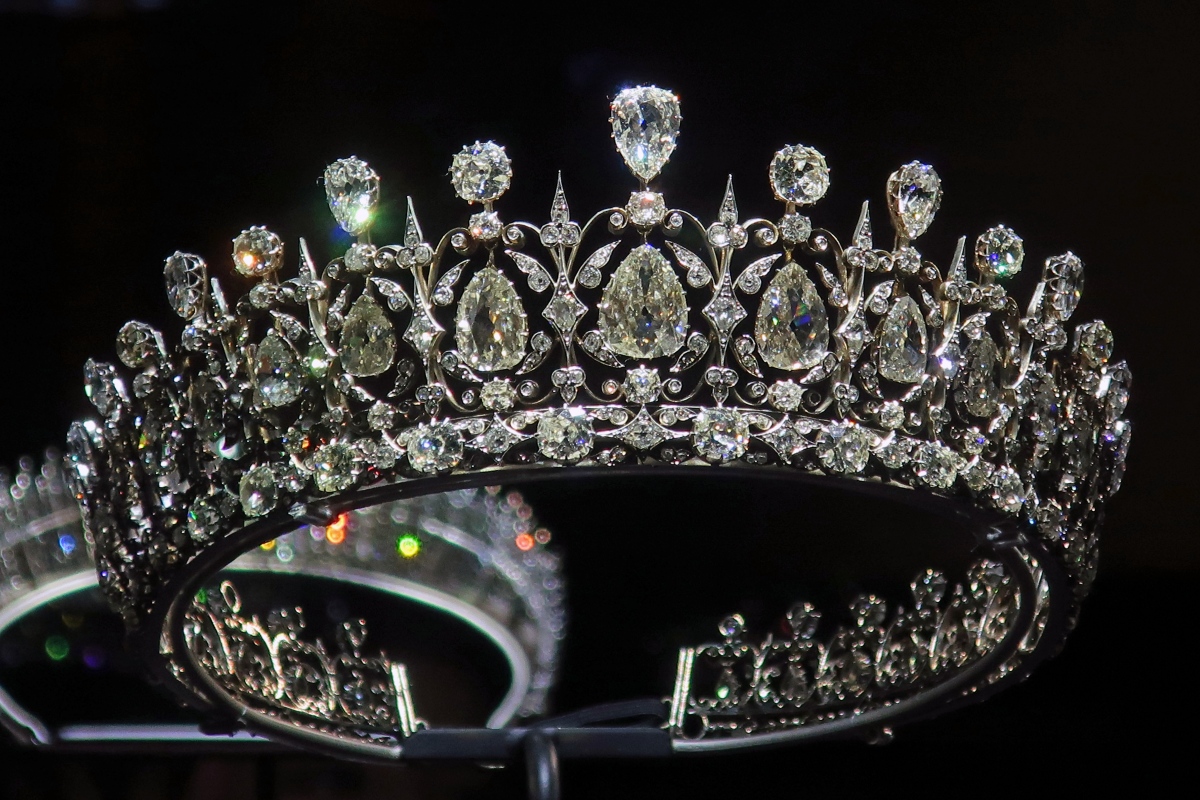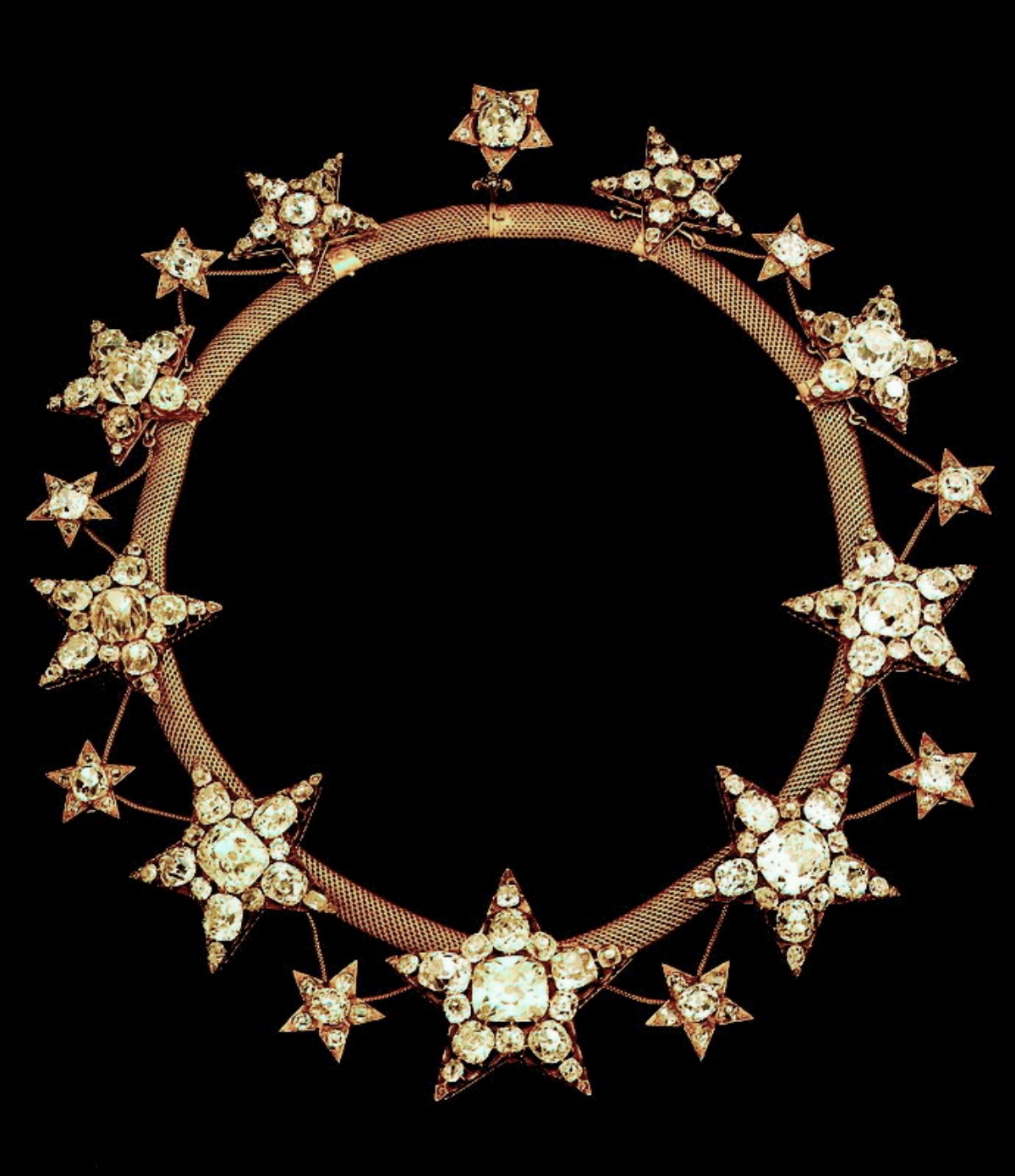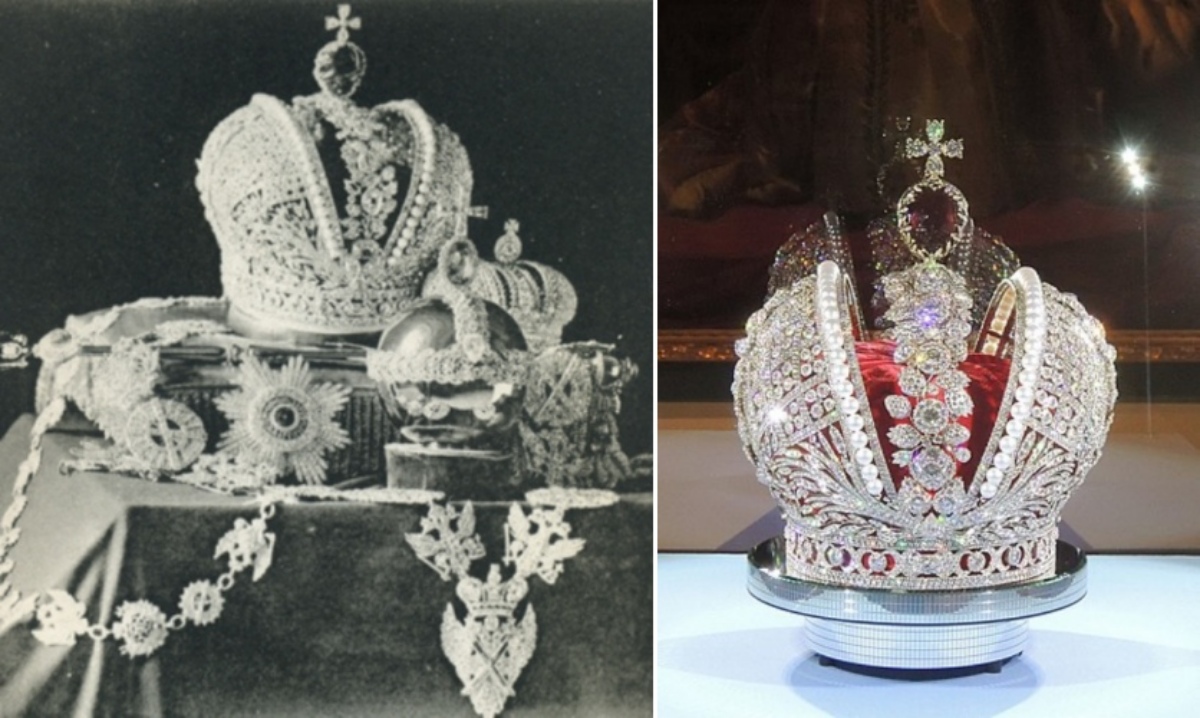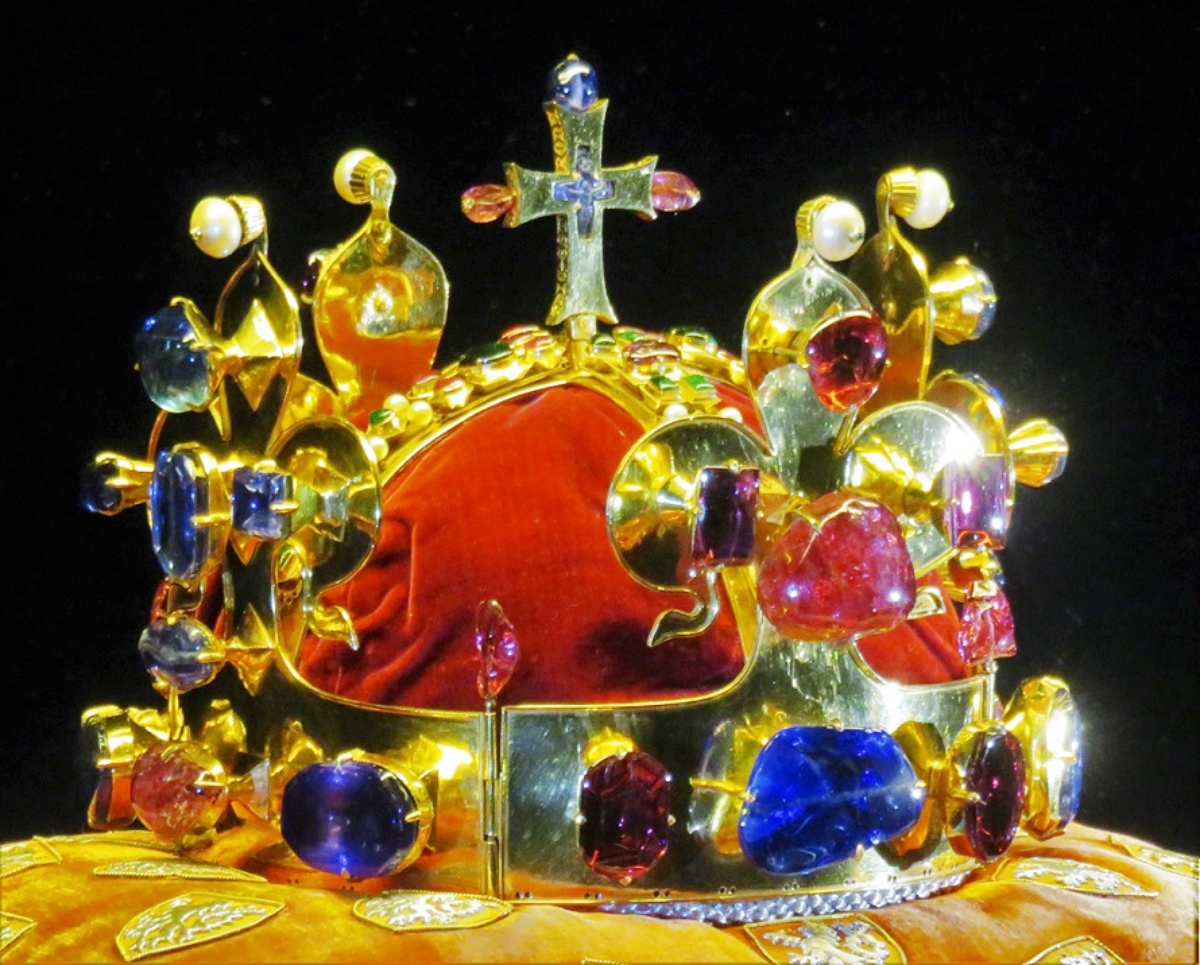The old saying goes, “heavy is the head that wears the crown”. In the case of European royalty, this was certainly true as their crowns and even the lighter tiaras were encrusted with gems, pearls, and enamelwork that made them sparkle and glisten in front of the huge audiences that congregated for major events like coronations. These rare jewels were gathered from all the corners of the earth and then assembled by master craftsmen at the whims of the rulers of the Western world. Today most of these crown jewels are kept in museums, but some are still taken out for big events. Here are some of the most magnificent crown jewels in Europe.
The Second Empire Pearl Tiara
Empress Eugenie, wife of Napoleon III, was gifted this stunning tiara by her husband for their 1853 nuptials. The sterling silver crown is made from 212 pearls and 1998 diamonds. It remained in France when she and her husband were exiled after the Second Empire was overthrown.
For a time it was on display at the Louvre before being sold into private hands. It was then sold back to the Louvre in the 1990s after a century in the hands of the House of Thurn and Taxis, a German aristocratic family.

The Fife Tiara
This sparkling tiara was a wedding gift for Queen Victoria’s granddaughter, Louise, from her husband, Alexander Duff, the 6th Earl of Fife. Some of the diamonds in this piece weigh up to 10 carats and some of the large pear-shaped stones are dangling so as to catch the light with every slight tilt of the head. It was truly made to impress all who looked on it. The front of the tiara is silver, while the back is gold.
Today it is owned by the Historic Royal Palaces trust and is displayed at Kensington Palace.

The Necklace of Stars
Made from Brazilian “old mine” cut diamonds, this stunning Necklace of the Stars was gifted to queen consort, Maria Pia, wife of Portuguese King Luis I upon their marriage in 1862.
While it was a gift, she was the one who designed the piece, and with it an equally stunning tiara to match. Today the necklace is housed at the Ajuda National Palace in Lisbon in the Royal Treasury Museum wing in Lisbon.

Crown Jewels of the Austrian Holy Roman Emperors
The crown and matching orb in the photo below belonged to Rudolph II, Holy Roman Emperor and ruler of Austria, Croatia, Hungary, and Bohemia (now the Czech Republic). Not only are they covered in jewels, there is also a fair amount of enamel or cloisonné work on the pieces as well.
The scepter was made from the rare horn of a narwal and is associated with the Holy Roman Emperor, Kaiser Matthias. Each of the items is emblazoned with the rich variety of jewels that you might expect rulers of the Holy Roman Empire to have. All the items were created in the 1600s and show a level of craftsmanship that belies the high status of their bearers. Today they are on display at the Imperial Treasury of Vienna.

St. Edward’s Crown
Also known as the Imperial Crown jewels, this is the crown that has been worn at many of the major coronations of British kings and queens since 1661. It is thought to have been made from the melted gold of the earlier St. Edward’s Crown, which was “disposed of” in 1649 at the start of the Third Civil War and the execution of King Charles I. The original crown is believed to have dated to the 11th century and was worn by the royal saint, Edward the Confessor.
This new crown was made to accept 400 gems and is outfitted with peppermint-stripe enamelwork that hides the gem fittings. It is trimmed at the top with royal purple velvet and on the bottom with genuine ermine fur.
The stones for this crown changed over time as they were rented for formal occasions and then returned to the jeweler once the ceremony was over- a common practice in England that persisted into the 20th century. Despite the frugality when it came to gems, there’s no denying that this is the crown many think of when they think of royalty. To date the crown has been worn by 6 monarchs for their coronations: Charles II, James II, William III, George V, George VI, and Elizabeth II. It is is planned that for the coronation of King Charles III will also wear St Edward’s crown.
We have to share a crown here! This is St Edward’s crown made for Charles II’s coronation in 1661. https://t.co/lFO9GMU3hF https://t.co/TqD8uqY7dL pic.twitter.com/p9FeaYshCZ
— Royal Collection Trust (@RCT) September 15, 2021
The Imperial Crown of Russia
This diamond-studded crown was not one of the pieces that went missing from the Russian crown jewels after the Russian Revolution in 1917. However, it is a highly guarded piece that’s kept in what is known as the Diamond Fund along with most of the other jewels at the Kremlin.
The crown is made with nearly 5,000 diamonds and 75 pearls. The floral motif down the center is an elegant choice and the piece was made for the coronation of Catherine the Great in 1762. Seen below is a photo from just after the Revolution alongside a high quality replica of the crown.

The Crown of Saint Wenceslas
Like the English crown, this Czech crown is named for a holy saint and ruler, King Wenceslas. This whopper of crown shows the wealth of its wearer not in tiny pavé diamonds or costly enamelwork, but in large gold crests and giant gems. There are 19 blue sapphires, 44 red spinels, and 30 green emeralds on the crown. The largest stone is a red tourmaline weighing 250 carats– the largest of this type known to exist.
The crown is one of the oldest in Europe and dates back to 1347. It was traditionally kept on the skull of Saint Wenceslas as an additional reliquary. Kings who wished to wear the crown had to pay the skeleton a fee for its rental. And, legend has it that anyone not authorized to wear the crown will be cursed if they put it on.
There is a matching orb and scepter, which were made in the 1500s to create a suite of jewels. They are kept today behind a series of locked vault doors at the Saint Vitus Cathedral, the keys to which require 7 church and public figures to open as each holds the key to a different door. The gems are sometimes taken out for exhibits and are shown to the public during these events.

SKM: below-content placeholderWhizzco for DOT

